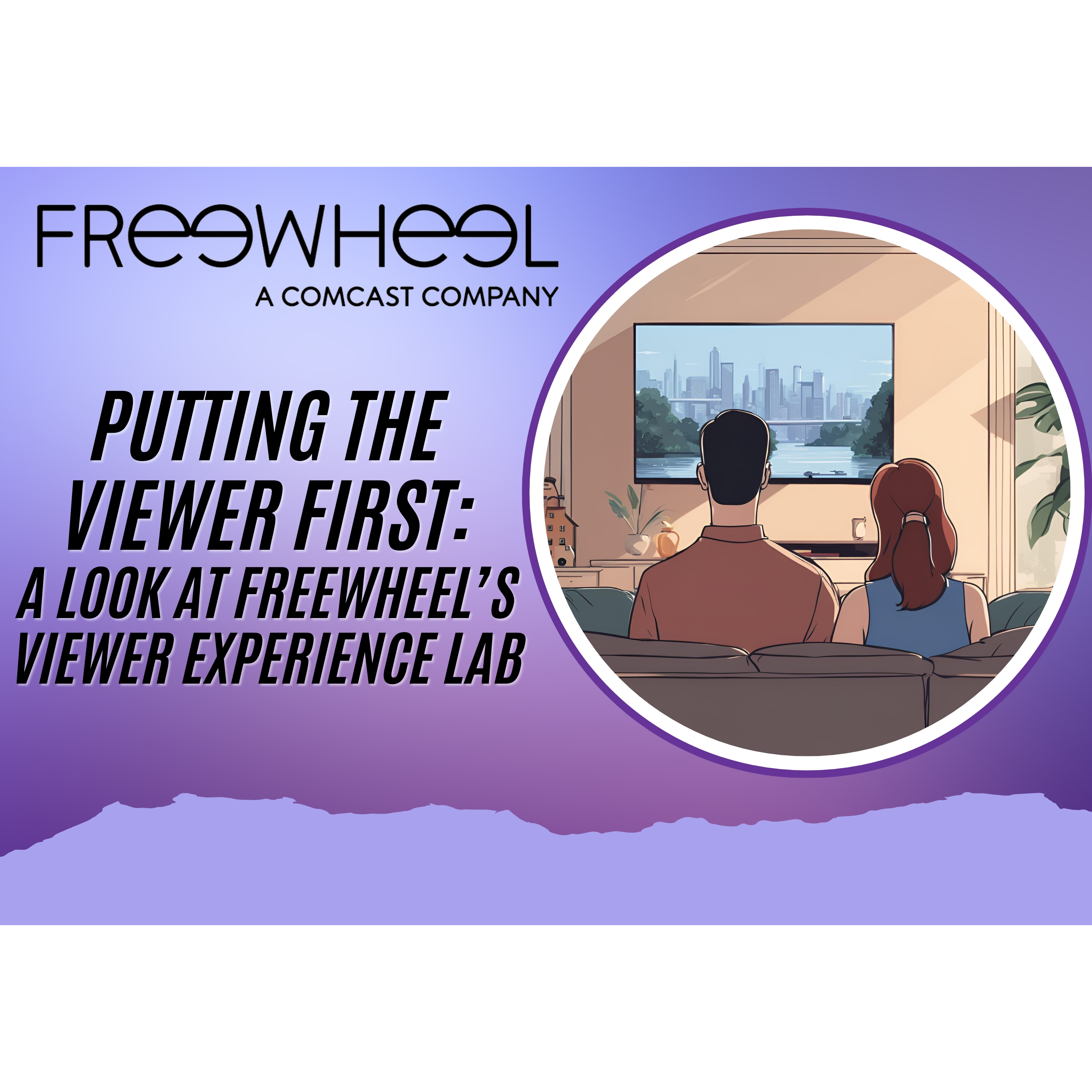Putting the Viewer First: A Look at FreeWheel's Viewer Experience Lab

The secret to compelling advertising is an ongoing project but, thanks to advanced research techniques, it is possible to more fully understand which ad experiences best engage viewers. FreeWheel has developed such a technique in partnership with MediaScience, in order to develop custom research studies to glean insights to improve the quality of ad experiences through FreeWheel's Viewer Experience Lab.
Launched in 2023, this initiative is designed to help address, as Chris Glover, FreeWheel's Vice President of Marketing explained, "an incredibly complicated industry. 'Every day at FreeWheel we are focused on every minute aspects of advertising technology but when we go home and watch TV, we get annoyed, just like every other consumer." Some of the biggest annoyances, he noted, include ad repetition, latency and "unnatural creative breaks" that interfere with the content narrative. Such annoyances diminish not only the enjoyment of the programming but also the engagement of the advertising.
The goal through all of this research effort is to help guide advertisers and content providers as to the most effective and engaging ad delivery methods. "We're never going to be prescriptive to a publisher, saying, 'Hey, you should do it exactly like this.' It's more insights to help them as they look at their own ad strategies," he explained and added, "Every publisher has their own approach, with different takes on things like creative diversity and pod lengths. But any light that we can shine to provide best practices about how they're ultimately delivering advertising to consumers and planning and selling their advertising, we think is very valuable."
The Viewer Experience Lab has been designed to improve three major areas of advertising – Quality of ads, Quantity of ads, and Relevancy of ads. For each of these important pillars of research, FreeWheel has designed whitepapers, the last of which, Relevancy, is due out later in 2024.
Although it is called a Viewer Experience Lab, it is not a lab per se. Rather it is more of a research approach. "We've partnered MediaScience who is an expert in advertising and media research, innovation, and technology, including neuro-marketing audience research,quot; Glover explained. This includes viewing sessions where they can control the variables such as pod duration, latency, and repetition both in home and at a mini lab facility. Testing includes, "Neuro metrics like heart rate, eye tracking, facial coding to truly understand how viewers are experiencing, how viewers are feeling when they view advertisements," he stated. From there, insights are gleaned such as viewer sentiment on ads and branding KPIs, for example.
The research studies and results so far have led to both micro and macro insights according to Glover.
On a micro level, with ad pods, for example, "we found that when ad pods were built with ads that are all the same lengths, either 15s or 30s, viewers found they felt the ad breaks were shorter," he shared. "So, if they saw a pod with six 30s ads for a total of three minutes or they saw one with a 30 second ad and then a 15 second ad, then a 30,and then another 15s, the inconsistent pod would have felt longer to them." The finding that pod consistency across ad formats leads to better viewer experience can be immediately applied in the field and should deliver better results.
On a macro level, Glover has found that while advertising in general, "gets a bad rap," the reality is' more nuanced. "Advertising has traditionally been thought of an annoyance and no one likes advertising breaks, but we found there's actually a lot of positive sentiment for advertising particularly when the ads are relevant to the consumer."
The ultimate takeaway upends a media shibboleth. "The ads themselves don't hurt program enjoyment. It's the bad ad experience. Our recent report "Improving the Quality of Ad Experiences", which we just released last week, found there was no change to program liking among viewers when there were ads present versus when there are no ads present and that alone is a very interesting data point," Glover concluded.
So, it's not the ads that are the problem, it is actually the experience that gets in the way of ad enjoyment. "It's the ad repetition, the latency, the blank slate that viewers sometimes see. Those are the real problems of the industry and that's what we're shining a light on," he noted.
For Glover, "Advertisers have a lot of choices, and they can buy advertising in a lot of different environments. I would advise them to not lose sight of putting themselves in the viewers' shoes. At the end of the day, it is the viewer that matters most. We advise advertisers to work with trusted partners who are putting this issue first."
Click the social buttons to share this story with colleagues and friends.
The opinions expressed here are the author's views and do not necessarily represent the views of MediaVillage.org/MyersBizNet.


